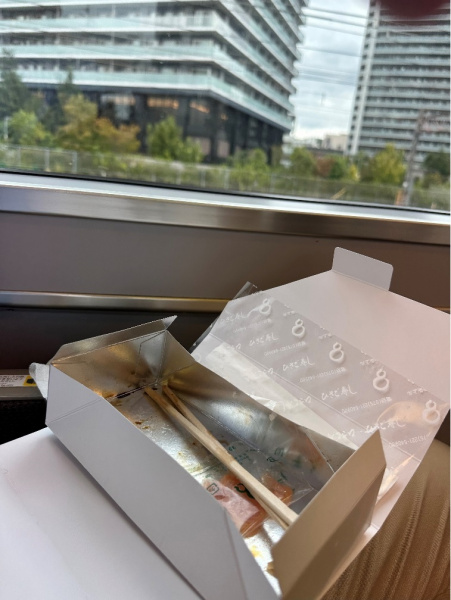Greetings,
Travel has a great way of giving you a broader perspective on your personal and professional life. As I write this post, I’m flying at 39,000 ft and will be landing in Tokyo in an hour; the first leg of a long journey home to the US after spending three weeks meeting colleagues and customers across Asia.
It’s been such a rewarding experience to get a new perspective on the packaging industry from this vantage point. In some ways, the packaging market in Asia is very similar to North America or Europe, but in other aspects it is totally unique. While our BASF Printing & Packaging business supports products and customers across all regions, the underlying market trends and dynamics in Asia were very interesting to discover. To use the one word ‘Asia’ does a disservice to the multiple countries and cultures that make up this part of the world. They cannot be summed up under one umbrella.
It was the experiences outside of the office that really struck me, where you get a sense for how the typical local goes about their day. Ordering food to-go or taking leftovers home from a restaurant are great examples of the wide array of packaging norms across some of the cultures I experienced. When I ordered sushi to take on a train in Japan, it was perfectly wrapped in several layers of protective packaging with perfectly portioned condiments. Compare this with the leftovers from a delicious Peranakan dinner in Kuala Lumpur, where they were packed into plastic bags and sealed with an elastic band. Both approaches are functional, both foods were delicious, but certainly a different approach to the act of packaging that food.
I had the chance to interact with customers and value chain members across three countries during this trip: Japan, China, and Malaysia. While each of these markets are different, they are certainly related. The preference in Japan for solvent borne inks and for gravure printing has also made an impact on the printing ink industry across the other two markets, where this approach is also quite widely adopted. While the flexography market and the market for water-based inks is growing, this conversion is happening in a gradual way and will see more tailwinds as economic growth rebounds. In China, there is a growing desire to transition from solvent-based to water-based inks in flexible packaging applications, and I’m optimistic that our Joncryl® FLX products and Prethink Ink network could be useful in supporting the transition here.
 One topic that unites the region is a focus on sustainability. Similar to other regions, there remains a divide on the right approach to implement sustainable packaging, with ink formulators, converters, and brand owners all working to address this topic in their own way.
One topic that unites the region is a focus on sustainability. Similar to other regions, there remains a divide on the right approach to implement sustainable packaging, with ink formulators, converters, and brand owners all working to address this topic in their own way.
I had the chance to meet with many of these industry stakeholders and discuss the need for recyclable packaging to lower carbon footprints and utilize bio-renewable raw materials. I also had the chance to speak at the International Packaging Innovation Forum (IPIF) in Shanghai, where I was able to give the industry a sense for what BASF is doing at the corporate level, and more specifically, in printing and packaging to enable a sustainable future for packaging. While the infrastructure to recycle packaging is well established in some countries and major cities, this is more challenging in developing economies and more rural areas, which could impact adoption of more readily recyclable options.
During the trip, I had the chance to see some great examples of our Functional Packaging Coatings (FPC) products in action as they are further adopted by the industry to address application needs for barriers and heat-sealable coatings.
With more agility than more established markets, Asia is poised to move quickly and decisively to implement more sustainable packaging and live the plastic-to-paper conversion that is a major goal across the globe. What is also clear in these projects, however, is that much of the work is done in Asia to support end markets in North America or Europe and is not necessarily destined for the domestic consumer. Our global structure is well suited to enable our customers’ success in this regard as we can provide international support and insight, no matter where the packaging ink or coating may need to be applied and where it will eventually be used.
A region of impressive growth in recent years, I expect the packaging market in Asia will continue to be dynamic in the years ahead. With increased investment and a growing focus on sustainability, I feel hopeful that BASF will play a strong role in enabling the industry to meet the challenges of tomorrow. I’m already excited to go back.
What time zone am I in?
-Simon
Read more print and packaging insights from our Head of Global Marketing, Resins for Paper, Simon Foster.